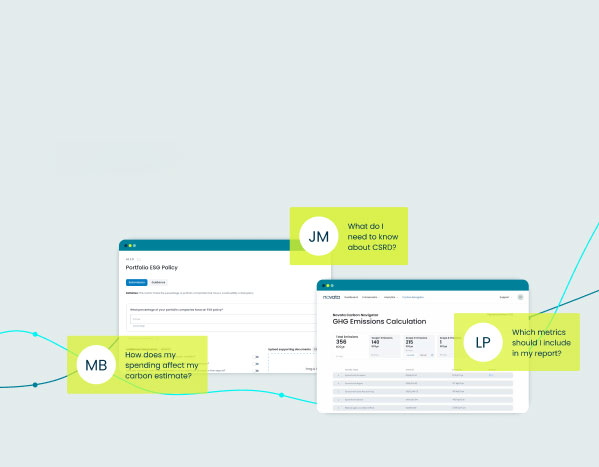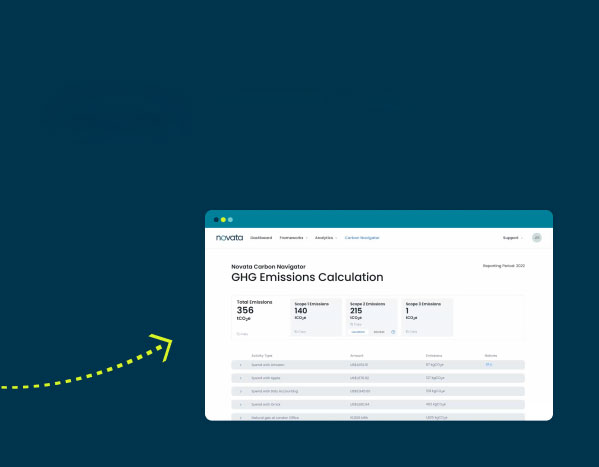Over the past few years, there has been an increase in stakeholders seeking more transparency and less greenwashing in ESG and sustainability reporting. As a result, regulators have begun to draft proposals to facilitate progress on this issue. We have seen the adoption of sustainability disclosure regulations in the EU for both financial institutions [via the Sustainable Finance Disclosure Regulation (SFDR) in 2021] and companies [via the Corporate Sustainability Reporting Directive (CSRD) in 2023].
In the UK, regulators have followed a different, yet related, path. Following the UK’s exit from the EU in 2020, the UK Government and British policymakers decided not to adopt the EU’s SFDR, despite stakeholder feedback that it would help to uncomplicate the ESG landscape and support standardization. Instead, the UK opted to develop its own regulation, with the Financial Conduct Authority (FCA) publishing a policy statement on the Sustainability Disclosure Requirements (SDR) and investment labels in November 2023.
The requirements build on disclosures UK firms are already required to make, including those within the Task Force on Climate-related Financial Disclosures (TCFD), which the FCA intends to update in line with the International Sustainability Standards Board (ISSB).
The FCA will impose sustainable investment product labels to provide more confidence to consumers. Additionally, it will introduce restrictions on how certain sustainability-related terms, such as ESG, green, and sustainable, are used in product names and marketing to reduce misleading promotion of products. More detailed disclosure requirements suitable for institutional investors or retail investors and requirements for distributors of products (e.g., investment platforms) will also be imposed to ensure that the labels and consumer-facing disclosures are accessible and clear to consumers.
While the SDR can be considered the UK’s version of the SFDR, there are key differences between the regulations that impact how investors report.
What Are the Main Differences Between the EU’s SFDR and the UK’s Sustainability Disclosure Requirement?
In short, the UK SDR regime and the EU SFDR have the same objectives: to reduce greenwashing, increase transparency of sustainable finance products, and inform investment decisions regarding sustainability matters. Like the EU’s SFDR, the FCA has introduced a package of measures aimed at “clamping down” on greenwashing and will require disclosure requirements at both the entity level (firm) and product level (fund).
However, unlike the SFDR, the UK’s SDR will support sustainable investment labeling, with the four labels confirmed as follows:
- Sustainability Focus: applicable to products investing mainly in assets that are sustainable for people and/or the planet. Firms will be tasked to set their own “robust, evidence-based” standards to ensure they align with the product’s sustainability objectives.
- Sustainability Improvers: applicable to funds investing in assets that may not be sustainable now but aim to improve their sustainability for people and/or the planet over time, including in response to the firm’s stewardship influence. This category focuses on the assets’ potential to meet the standards over time, placing an even higher emphasis on firms’ asset selection processes.
- Sustainability Impact: applicable to funds investing in solutions to problems impacting people or the planet to achieve “real-world impact.” These products will need to have an explicit objective to achieve a positive and measurable contribution to sustainability outcomes.
- Sustainability Mixed Goals: applicable to funds investing across different sustainability objectives and strategies aligned with the other three categories. This means firms will also need to disclose details of the proportion of assets invested “in accordance with each relevant label.”
Given stakeholder feedback in the latest SFDR consultation, the direction of the EU SFDR could change to a labeling system similar to that of the UK. Although changes to the EU SFDR (if any) are unlikely to take effect until 2025 at the earliest, it will be interesting to see how the UK SDR and EU SFDR speak to one another. One example of where stakeholders will demand interoperability is product (fund) thresholds. Within the SFDR, there are calls to reduce the current threshold for Article 9 funds from 100% sustainable investments to 80%. However, the UK’s SDR states that all funds under the four labels will be subject to a 70% minimum threshold rule. It is likely that the investor community will anxiously be awaiting some level of similarities here.
Other differences to note include the fact that the UK SDR will not extend to entities outside of the UK. This differs from the EU SFDR, which can impact firms globally should they market products in the EU or have EU shareholders. In addition, although some KPIs are likely within the UK SDR, consideration of principal adverse impacts (PAIs) like those within the EU SFDR and the application of a ‘do no significant harm’ (DNSH) criteria will not exist within the UK SDR. There is the potential for some form of similar criteria to apply once the UK has developed its own green Taxonomy like that of the EU’s Taxonomy. It is understood that the UK Taxonomy will be science-based, build on the taxonomies already developed in regions such as the EU, and focus on the UK’s net zero target.
Summary of Differences Between the SDR and SFDR
A breakdown of the key similarities and differences is below:
| REQUIREMENT/APPLICABILITY | UK SDR | EU SFDR | COMMENTARY |
|---|---|---|---|
| Applicability and extension of rules beyond originating region | ❌ | ✅ | The UK SDR applies to issuers of bonds and shares listed on a UK regulated market and UK-based investment managers. The EU SFDR applies to entities established in the EU and extends to products marketed in the EU, regardless of the location of the entity. |
| Extension of rules to include marketing materials | ❌ | ✅ | The UK SDR’s rules will extend to the use of relevant terms in marketing materials. The EU SFDR does not (yet) go this far. |
| Entity-level disclosures | ✅ | ✅ | Both will require entity-level disclosures. |
| Product-level disclosures | ✅ | ✅ | Both will require product-level disclosures. |
| Methodologies, data sources and processing, limitations to methodologies and data | ✅ | ✅ | Both will require these elements to be disclosed. |
| Labeling scheme | ✅ | ❌ | The UK SDR will be a labeling scheme. Currently the SFDR is not a labeling scheme but a recent consultation implies this could be an option in the future. |
| Sustainable investment threshold | ✅ | ❌ | The EU SFDR does not stipulate, beyond Article 9 products, for a proportion of investments to be deemed as sustainable. It is expected that the UK SDR will set thresholds for each label (e.g., 70% for a Sustainable Focus label). |
| Taxonomy Alignment | ❌ | ✅ | The UK has aspirations to develop a Taxonomy; however, this has not yet been developed. The EU has a Green Taxonomy, but no Social Taxonomy. |
| Do no significant harm (DNSH) principle | ❌ | ✅ | The EU SFDR states that a sustainable investment must be evidenced against a certain set of criteria, one of which is the DNSH principle. The UK SDR does not. |
| Principal Adverse Impact (PAI) indicators | ❌ | ✅ | The EU SFDR requests the consideration of PAIs and the disclosure of PAI indicators for many firms. The UK SDR will develop quantitative KPIs. |
| Interoperability with the Corporate Sustainability Reporting Directive (CSRD) | ❌ | ✅ | The EU SFDR is part of the EU’s broader Sustainable Finance Package, within which the CSRD forms just one building block. The UK intends to build its own package rather than adopt that of the EU. |
| Interoperability with the International Sustainability Standards Board (ISSB) | ✅ | ❌ | The UK SDR is expected to be based on the ISSB standards, as stated by the UK Government in August 2023. |
It is expected to take approximately three years to complete the UK SDR implementation process. Given the overlap with the EU’s SFDR consultation and anticipated changes, we hope that some level of interoperability will be met by the time both are completed.
Key Dates in the SDR Timeline
A summary of the key dates is below:
- May 31, 2024: Anti-greenwashing rules will come into place. It’s important to remember that these will be applicable to all FCA-regulated firms, not just asset managers.
- July 31, 2024: The labeling regime will come into effect and firms will be expected to start using the relevant labels alongside disclosures.
- December 2, 2024: The naming and marketing rules will be implemented alongside accompanying disclosures.
- December 2, 2025: The ongoing product-level and entity-level disclosures will come into force for firms with more than £50bn in assets under management.
- December 2, 2026: Entity-level disclosure rules for firms with more than £5bn AUM will be introduced.






